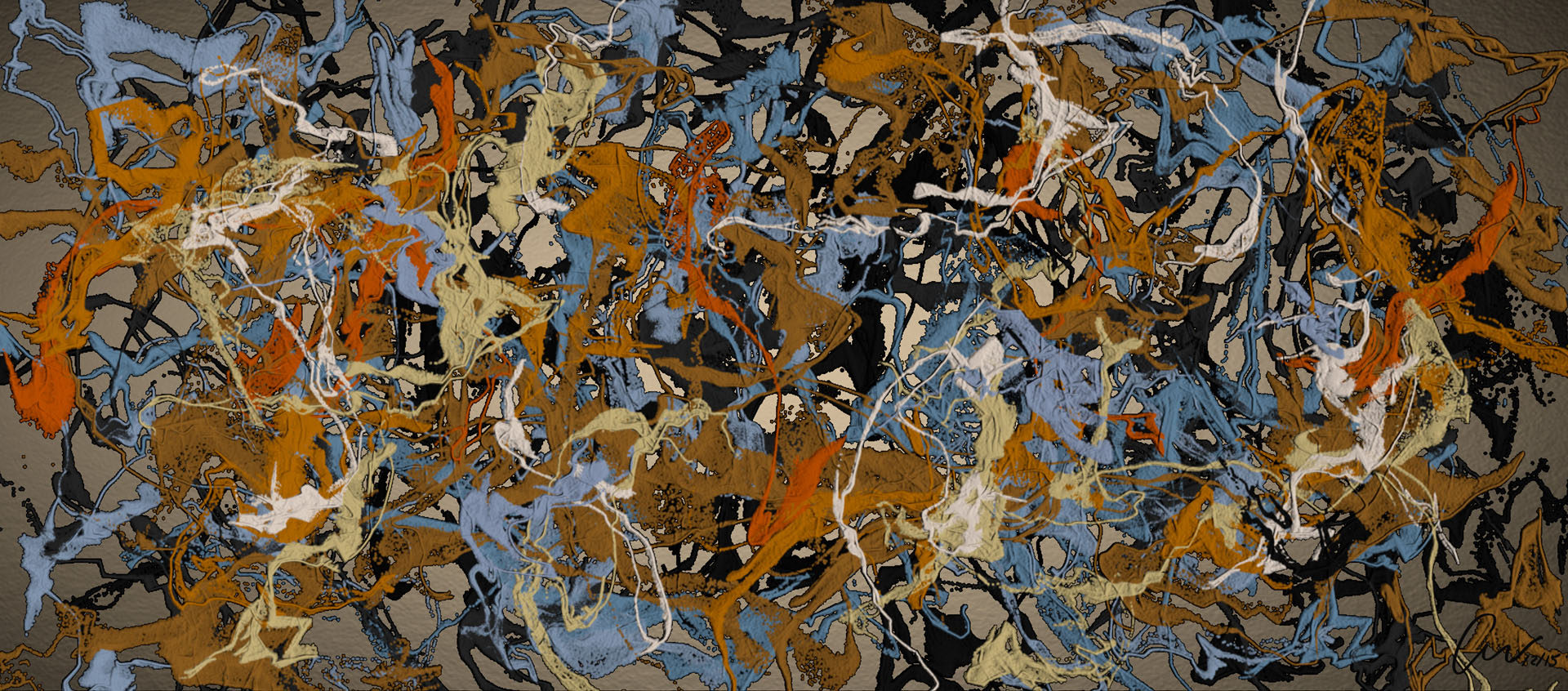“Painting with Turbulence” by Wang, Wang and Geist
Conference:
Type(s):
Entry Number: 05
Title:
- Painting with Turbulence
Presenter(s)/Author(s):
Abstract:
In a 2012 article in Leonardo, Lior Shamir presented an image analysis of 513 works of art created by 9 well-known artists. The analysis used the Wndchrm algorithm, which is based on a large collection of numerical image content descriptors. The conclusion, surprising at first glance, was that the two artists whose work was most similar to one another were Vincent van Gogh, a post-Impressionist, and Jackson Pollock, an Abstract Expressionist. Nevertheless, in retrospect, the essence of the strong similarity can be captured in a single word, employed by Leonardo da Vinci some 500 years ago: turbulence. The goal of this project is to create a software system that provides an artist-directable framework for composing paintings that naturally carry the energy of turbulent flow. To this end, a 3D lattice-Boltzmann model is used to simulate flows with Reynolds numbers on the order of 10 million, e.g., air flow at 100 m/s, and this is coupled with a particle system generated by a commercial package, Houdini, to provide a 3D turbulent flow of paint droplets. At the user’s option, the 3D flow can be captured by an arbitrarily placed, simulated canvas.
References:
Chu, N., Baxter, W., Wei, L.-Y., and Govindaraju, N. 2010. Detail-preserving paint modeling for 3d brushes. In Procedings of the 8th international symposium on non-photorealistic animation and rendering (NPAR 2010), Association for Computing Machinery, Inc.
Davidson, P., Kaneda, Y., Moffatt, K., and (eds.), K. S. 2011. A Voyage Through Turbulence. Cambridge University Press, Cambridge CB2 8BS UK.
Geier, M., Greiner, A., and Korvink, J. G. 2006. Cascaded digital lattice Boltzmann automata for high reynolds number flow. Physical Review E 73, 6, 066705.
Lee, S., Olsen, S., and Gooch, B. 2006. Interactive 3d fluid jet painting. In NPAR ’06: Proc. 4th Int. Symp. on Non-photorealistic Animation and Rendering, ACM Press, New York, NY, 97–104.
Lee, S., Olsen, S., and Gooch, B. 2007. Simulating and analysing jackson pollock’s paintings. Journal of Mathematics and the Arts 1, 2, 73–83.
Lu, J., Barnes, C., DiVerdi, S., and Finkelstein, A. 2013. Realbrush: Painting with examples of physical media. ACM Trans. Graph. 32, 4 (July), 117:1–117:12.
Museum of Modern Art, 2015. Allover painting. http://www.moma.org/cef/abex/html/know_more9.html.
Premnath, K., and Banerjee, S. 2011. On the three-dimensional central moment lattice boltzmann method. J Stat. Phys. 143, 747–794.
Shamir, L. 2012. Computer analysis reveals similarities between the artistic styles of van gogh and pollock. LEONARDO 45, 2, 149–154.
Side Effects Software, 2015. Houdini 14.0 documnetation. http://www.sidefx.com/docs/houdini14.0/.




